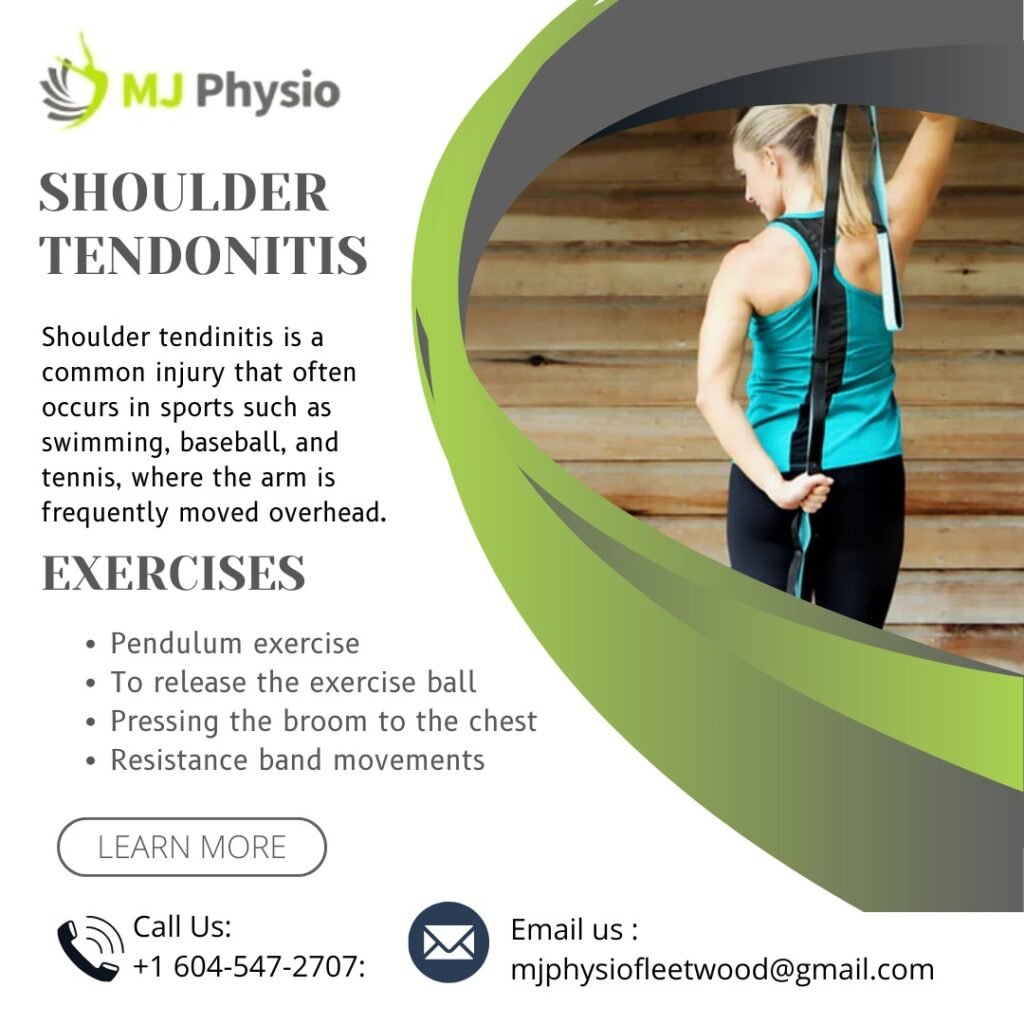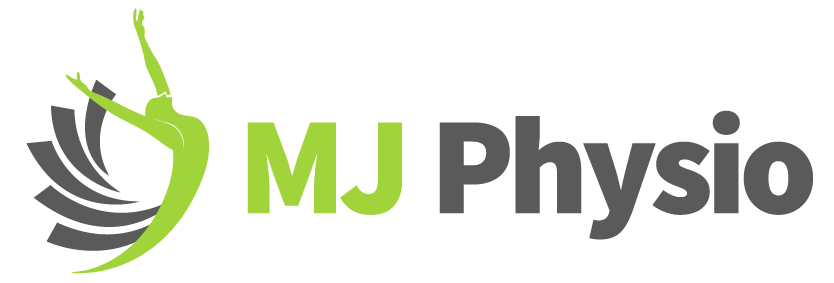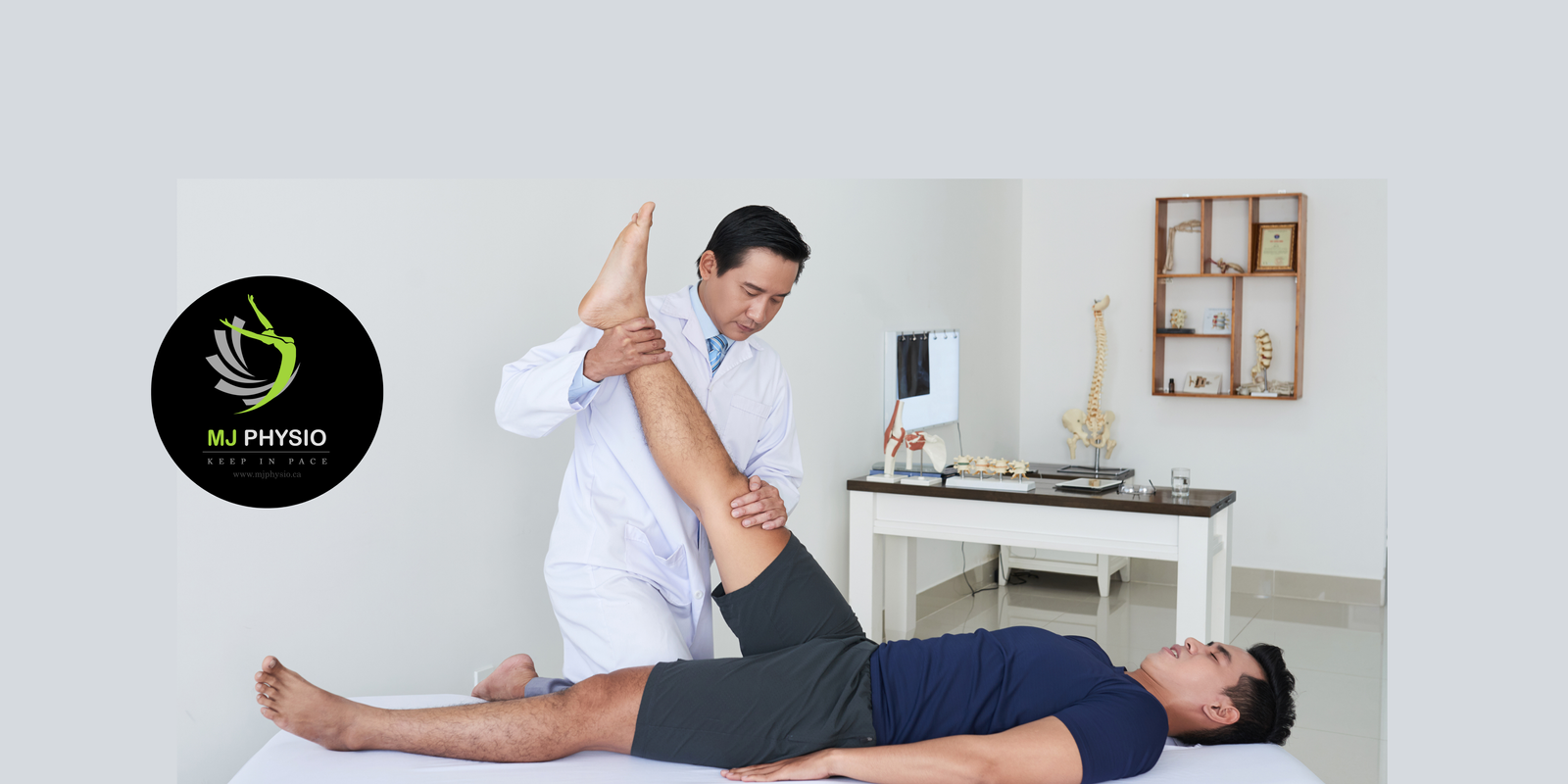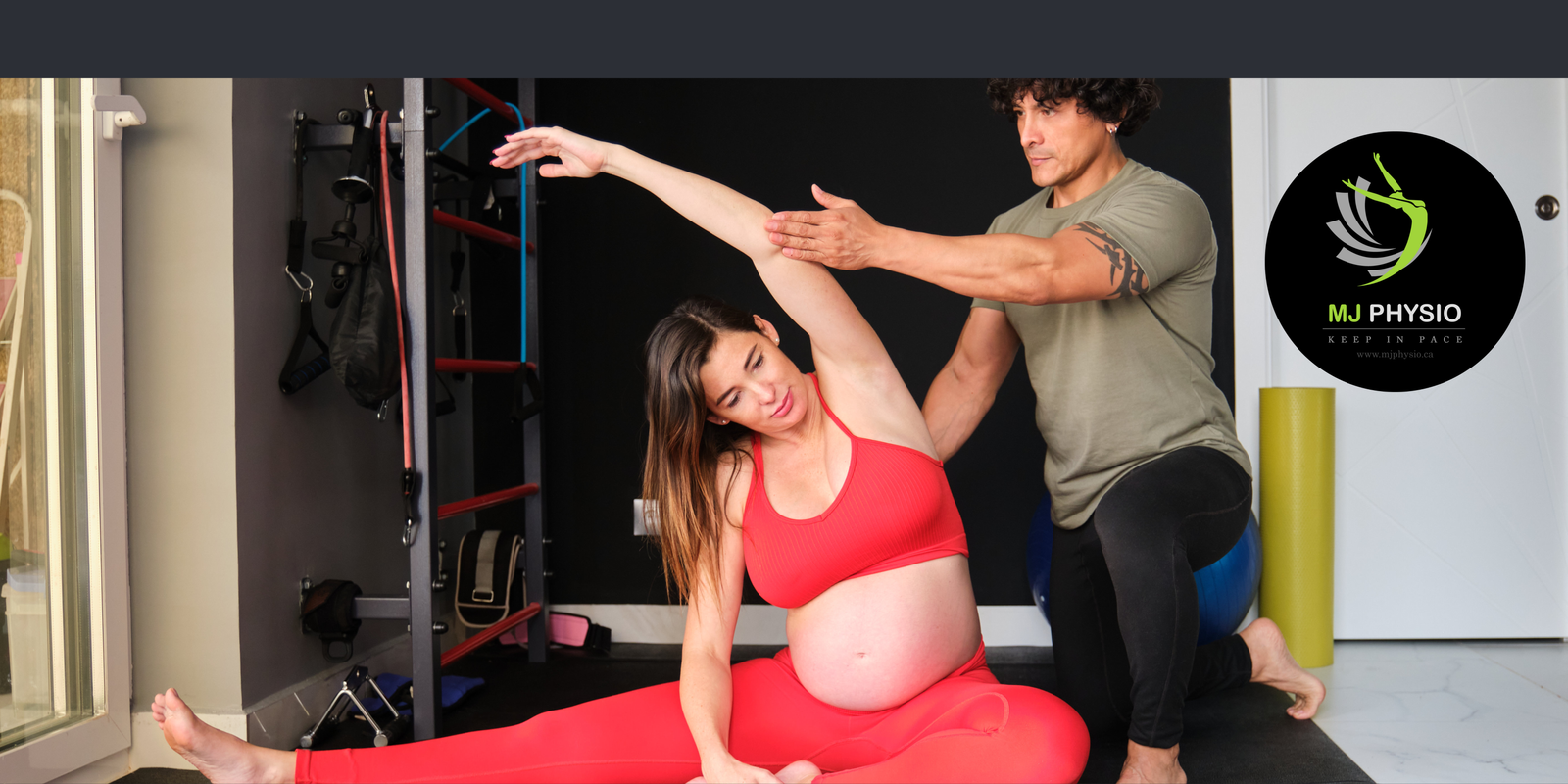Best Exercises For Shoulder Pain or Tendinitis
Shoulder tendinitis is a common injury that often occurs in sports such as cricket, baseball, and raquet sports, where the arm is frequently moved overhead. The pain, which is usually felt at the top of the shoulder and sometimes radiates down the arm, worsens with overhead or twisting movements. In severe cases, the pain can persist and even disturb sleep. Best exercises for shoulder pain or tendinitis has to be supervised and instructed on by a physio before starting as a home program.
The shoulder joint is complex. The humerus (upper arm bone), and rotator cuff tendons join the muscles, and the bursa (fluid-filled sacs that reduce friction) move in a tight relationship between the bone and the joint called the Coracoacromialarch. When the arm is raised, this channel stretches and puts pressure on the tendons and bursa. Excessive use of the hand increases the risk of injury and inflammation of these structures.
Bursitis occurs when the bursa becomes inflamed due to compression of the coracoacromial arch, causing pain. Tendinitis, on the other hand, involves inflammation, swelling, and tenderness of the rotator cuff. Although symptoms of tendinitis and bursitis may last for a few days, they may recur or become chronic over time.

Shoulder tendinitis causes
Shoulder tendinitis typically stems from overuse or injury due to repetitive movements or impact. It’s prevalent among athletes and individuals with shoulder injuries, but anyone can develop it from recurrent use of the tendons. The condition often affects the four tendons comprising the rotator cuff: the infraspinatus, subscapularis, supraspinatus, and small tendons.
Symptoms indicating potential shoulder tendinitis include snapping or popping sensations, reduced mobility, pain, weakness, and swelling or tenderness in the shoulder. Seeking evaluation from a Penn orthopaedist is advisable if experiencing any of these symptoms.
Shoulder tendinitis stages:
Tendinitis progresses through several stages, each with its characteristics:
- Overuse Tendinitis: Repetitive movements of the shoulders, such as golf, throwing or overhead lifting, can cause skin irritation, bruising or tearing. rotator cuff tendon. This causes shoulder pain and weakness.
- Calcific tendinitis: Long-term inflammation can cause calcium deposits in the tendons of the rotator cuff. This buildup causes pain and limits the strength and movement of the shoulder.
- Impingement tendonitis: narrowing of the space between the rotator cuff and the coracoacromial arch can cause the humerus to “press” against the rotator cuff arch. This happens when the cuff is weakened, the bursa is inflamed or there is bone tissue. Tendinitis is often caused by repetitive activities involving the shoulders, such as sports or jobs that involve overhead tension.
- Rotator tendon tear: Severe tendinitis due to prolonged impact, degeneration, or a sudden injury such as a fall can cause a partial or complete tear of the rotator cuff tendons. This causes more severe shoulder pain, weakness and loss of normal movement and function.
Treatment for shoulder tendinitis involves several steps: Before starting the best exercises for shoulder pain or tendinitis you should
Rest: Avoid activities that worsen the pain and discomfort, as well as the activity that initially caused the problem. Your doctor may suggest using a sling to keep the shoulder immobilized.
Ice: Apply an ice pack (wrapped in a towel) to the shoulder for 20 minutes at least twice a day. Additionally, apply ice after any activities that aggravate the shoulder pain.
Medication: Your doctor may prescribe anti-inflammatory or pain-relieving medication in pill form to reduce pain and inflammation while your body heals naturally. In some cases, an injection of cortisone with novocaine into the shoulder may be recommended. After receiving this injection, refrain from engaging in vigorous arm activities for several weeks.
Physical therapy: Your doctor may refer you to a physical therapist for exercises or other forms of therapy. Best exercises for shoulder pain can help strengthen the shoulder and prevent future occurrences.

Best suggested exercises for shoulder Pain or tendinitis.
Physical exercises recommended for shoulder tendinopathy recovery:
Shoulder muscles strengthening , shoulder blade stability and upper trunk stability exercises.
- Isometric shoulder muscle strengthening when shoulder movement is pain full in initial healing phase. Best exercises for shoulder pain or tendinitis.
2. Rotator cuff muscles strength exercises. Best exercise for shoulder pain.
3. Progression of rotator cuff strength training exercises.
4. Shoulder blade stability/strength exercises Rhomboids.
5. Lower trapezius, latts, rhomboids strength training and shoulder blade stability.
6. Shoulder blade/ scapula muscle strength and stability exercise.
7. Strength and stability upper trunk.
8. Trunk rotation strength and thoracic mobility .
Best Exercises for shoulder pain
1. Pendulum exercise:
- Start by standing with your body slightly forward and let one arm hang straight in front of you while resting the other on the table.
- Make very fine circular motions with the stop, allowing it to swing freely like a pendulum.
- Focus on minimal movement, almost as if your body would naturally move your arm.
- Repeat as desired to relax and stretch passive shoulder structures.
2.To release the exercise ball:
- Place the exercise ball on the table, stand facing it with your thighs against it, and place both hands on it.
- To stretch your body, gradually roll the ball onto the table and do a passive push up with your arms out in front of you.
- Maintain relaxation and focus on breathing throughout the movement.
- Try to do three sets of about 10 repetitions with short rest periods between sets to ensure the ball supports the weight of your arms.
3.Pressing the broom to the chest:
- Lie on your back on a table or floor, andhold the broom with your hands slightly wider than shoulder width and against your chest.
- Exhale as you press the bar toward the ceiling to straighten your arms while lifting your boxes slightly off the floor
- When you return to the starting position, check the movement
- Do 10 repetitions in three sets, taking breaks in between and listening to your body, taking breaks if you feel discomfort.
4.Resistance band movements:
- Stand with your hands by your body and hold the other end of the resistance band behind you.
- Bend your arm to control your fist forward, moving your shoulder blade slightly forward.
- Return to the original position with the control button.
- Aim for 10 repetitions on each side for three sets to vary the tension, adjusting the distance from the resistance band attachment point.
Be aware of potential discomfort and adjust accordingly to avoid pain during exercise.
Best stretching exercises for shoulder tendinitis
Stretching exercises to help improve shoulder range of motion:
1.Supine passive arm elevation:
- Lie on your back and hold a cane or stick with both hands about 18 inches apart.
- With straight elbows, lift the cane upward using assistance from the opposite arm, bringing the hands overhead.
- Lower the arm slowly back to the bed, with the uninjured arm doing most of the lifting to avoid pain.
2.Hands Behind the Head Stretch:
- Lie on your back and place your hands behind your head.
- Slowly lower the elbows to stretch the shoulders, holding the stretch for ten seconds before returning to the starting position.
- Repeat this movement ten times, twice a day.
3.Supine cross-chest stretch:
- Lie on your back and hold the elbow of the injured arm with your opposite hand.Gently stretch the elbow toward the opposite shoulder to feel a stretch across the chest and shoulder.
- Perform each stretch to a comfortable point of tension and hold for 15 to 20 seconds.
- Start with one or two warm-up repetitions with minimal pain, gradually increasing the range of motion as you feel more flexible.
- Aim for 5 to 10 repetitions of each stretch, 2 or 3 times a day, ensuring proper warm-up beforehand. If you experience mild pain during stretching, avoid pushing through it and allow the arm to become looser with patience and warming up.
4.Standing rotation:
- Stand with the injured shoulder next to the door, maintaining your arm close to your body with the elbow bent at a 90-degree angle.
- Shift your body away from the door to extend your shoulder outward.
- Maintain this position for ten seconds, repeating the movement ten times. Perform this exercise twice daily.
5.Internal rotation behind the back:
- Place the hand of the injured arm behind your back at waist level while sitting or standing.
- Grasp a towel with the opposite hand and gently pull it upward to raise the hand toward the shoulder blade.
6.TheraBand exercises:
- For TheraBand shoulder strengthening exercises, perform them slowly in both directions.
- The objective is to achieve maximum benefit without experiencing pain.
- Always operate within a pain-free range of motion and gradually execute the exercises.
- Slower movements ensure better muscle contraction throughout.
- Complete each exercise 15-20 times, once or twice daily.
How can we help you?
According to Thierry, individuals undergoing various sessions often experience persistent pain but also notice improved flexibility. Despite experiencing discomfort, they find they can move further with less pain over time. Thus, therapists focus on the entire shoulder area rather than solely targeting muscles with painful tendons to preserve mobility.
- Furthermore, physical therapists incorporate joint massage to alleviate stiffness.
- However, shoulder massage presents challenges due to the need for simultaneous movement of the joint, which varies depending on the affected muscles.
- The shoulder joint being an incredible flexible joint meant for human use for various activities needs lot of movements and planned exercises with stretches to resolve ant joint or tendon issues around the joint area .
- Physio exercises plays a vital 80 percent of your therapeutic goal towards recovery and 20 percent can be attributed to massage , rest and use of modalities.






Post Comments